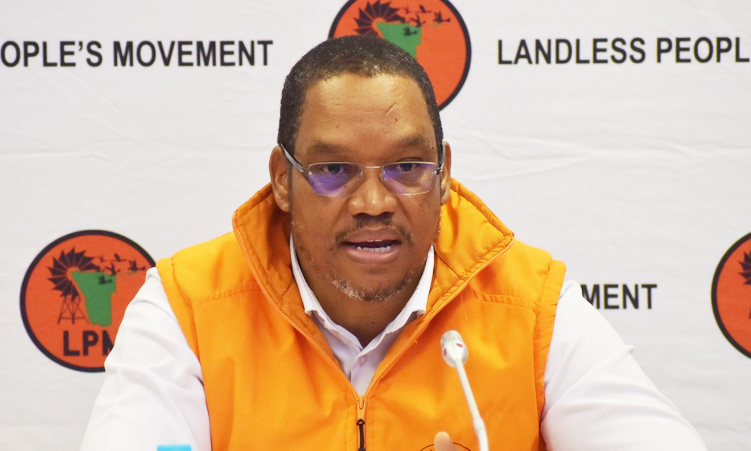The Landless People’s Movement (LPM) is accusing the Rundu Town Council of pushing residents further into poverty by destroying their shacks and dispossessing them of land.
This has been taking place since Rundu’s expansion plans commenced in 2016, the party says.
LPM leader Bernadus Swartbooi says destroying the poor’s shacks without compensation by the Rundu Town Council is inhumane and unlawful.
He said this during a press conference at Rundu yesterday.
“Land is an important social and economic aspect of life. It is the main means of production . . . denying or depriving citizens legitimate access to ownership is an unacceptable act.
“Thus, we vehemently condemn the actions of the Rundu Town Council,” Swartbooi said. Marcellus Haivera, the chairperson of the Rundu Urban Community Association, an alliance partner of the LPM, with one seat on the town council, said the shack of Ihemba M’Kwanamba (82) was destroyed and the land was sold to “a rich person” without her consent or knowledge.
He says San people at the town are treated as second-class citizens.
M’Kwanamba’s shack was sold last November.
“Rundu Town Council must return the land to the old aunty or settle her in new and comparable land . . . We will pursue this matter,” Swartbooi said.
Rundu Town Council spokesperson Benjamin Makayi denied Swartbooi’s allegations.
“The LPM must provide us with a list of names, show us the location, and at which informal settlement we have demolished shacks and displaced people without compensation. “To my knowledge, the council has never demolished shacks or dispossessed people from land,” he said.
He is also not aware of M’Kwanamba’s case, Makayi said.
Swartbooi called on the government to provide more development funding to Rundu, saying despite the town’s growing population, Rundu has been receiving the smallest share of the national budget.
Swartbooi said Rundu is the second-largest human settlement in the country, given its growing population.
“Roads, sewerage systems, water infrastructure development, housing provision, as well as more schools and other associated education institutions are necessary,” he said.
Swartbooi said the government has turned a blind eye to the closure of schools such as John Mutorwa Secondary School, which was established by unemployed teachers and accommodated about 270 pupils, while the problem of overcrowding has not been resolved.
A Grade 5 pupil at Siguru-Guru Primary School, where over 600 pupils are taught in tents, MeShika Maggy, said she wants the government to build them new schools as the tents are overcrowded, hot and unsafe.
“We are between 60 and 70 pupils in our class. We continue classes here even when it rains.
Sometimes, when we get there, we find scorpions and snakes in the tent,” she said.
The acting education director of the Kavango East region, Christine Shilima, says the directorate has awarded tenders worth more than N$18 million for the construction of classrooms.
“The contractors are expected to complete the work by the end of August.
Apart from the N$18 million tenders, we also received funds for the construction of 41 additional classrooms,” she says.
Stay informed with The Namibian – your source for credible journalism. Get in-depth reporting and opinions for
only N$85 a month. Invest in journalism, invest in democracy –
Subscribe Now!






